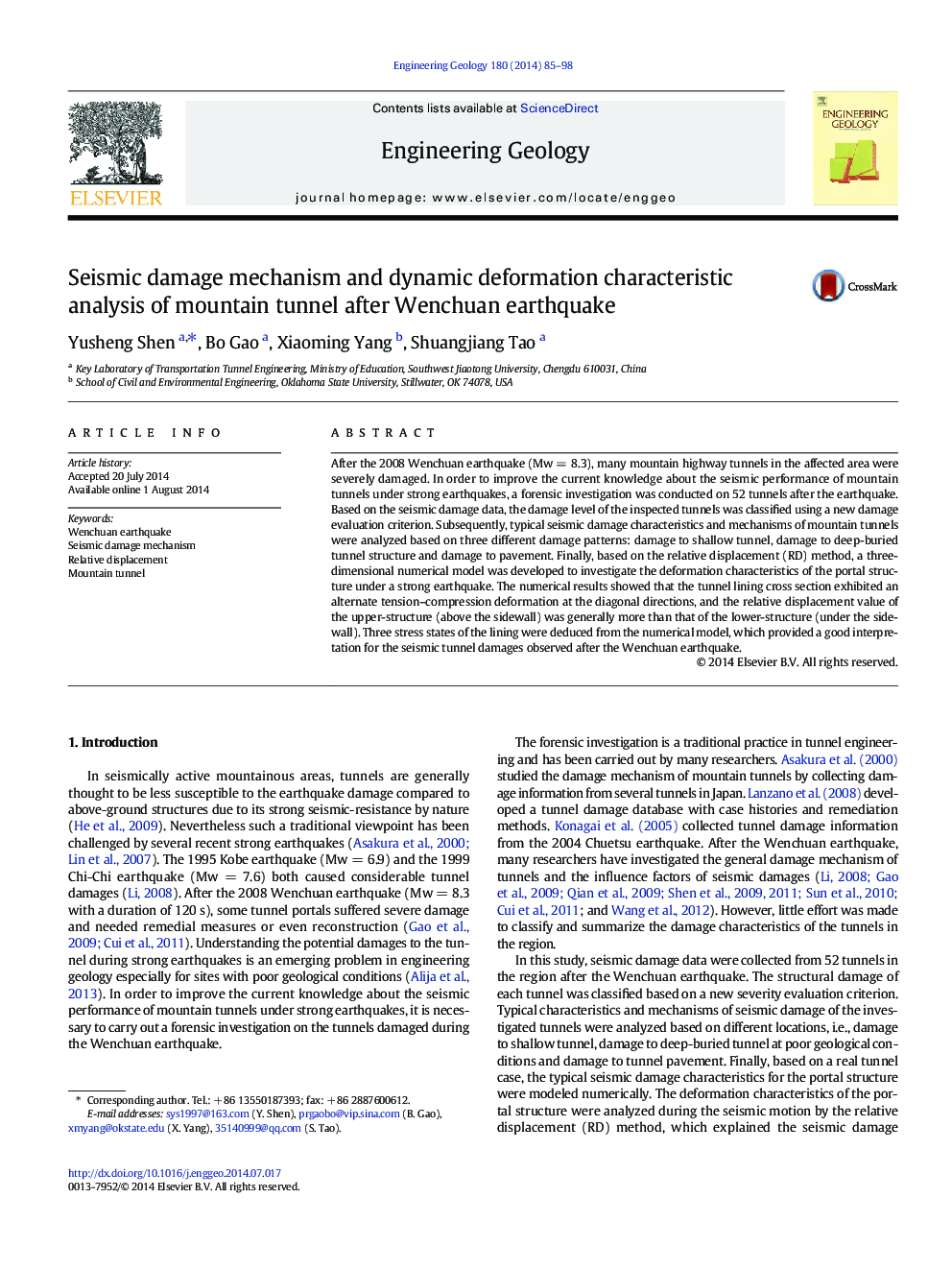| Article ID | Journal | Published Year | Pages | File Type |
|---|---|---|---|---|
| 6447839 | Engineering Geology | 2014 | 14 Pages |
Abstract
After the 2008 Wenchuan earthquake (Mw = 8.3), many mountain highway tunnels in the affected area were severely damaged. In order to improve the current knowledge about the seismic performance of mountain tunnels under strong earthquakes, a forensic investigation was conducted on 52 tunnels after the earthquake. Based on the seismic damage data, the damage level of the inspected tunnels was classified using a new damage evaluation criterion. Subsequently, typical seismic damage characteristics and mechanisms of mountain tunnels were analyzed based on three different damage patterns: damage to shallow tunnel, damage to deep-buried tunnel structure and damage to pavement. Finally, based on the relative displacement (RD) method, a three-dimensional numerical model was developed to investigate the deformation characteristics of the portal structure under a strong earthquake. The numerical results showed that the tunnel lining cross section exhibited an alternate tension-compression deformation at the diagonal directions, and the relative displacement value of the upper-structure (above the sidewall) was generally more than that of the lower-structure (under the sidewall). Three stress states of the lining were deduced from the numerical model, which provided a good interpretation for the seismic tunnel damages observed after the Wenchuan earthquake.
Related Topics
Physical Sciences and Engineering
Earth and Planetary Sciences
Geotechnical Engineering and Engineering Geology
Authors
Yusheng Shen, Bo Gao, Xiaoming Yang, Shuangjiang Tao,
